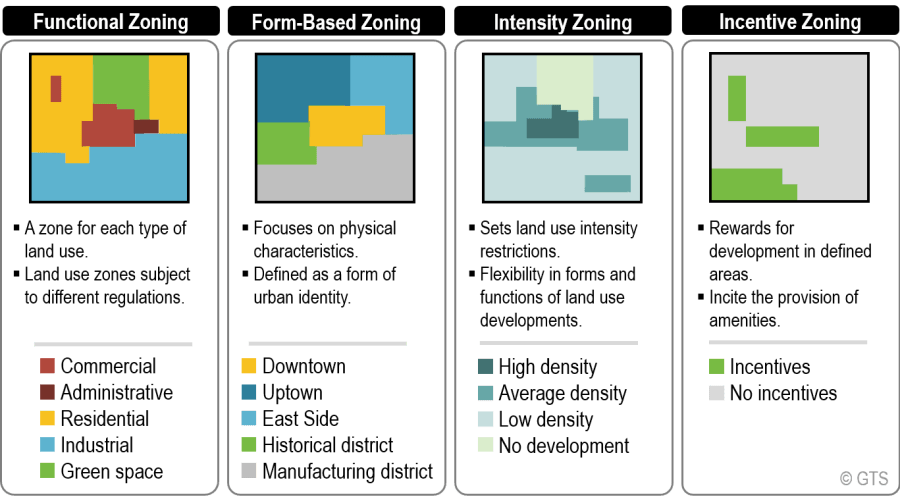it comes to zoning and land use regulations, there are several key considerations that landowners or developers need to keep in mind. These considerations are crucial in ensuring compliance with local regulations and maximizing the potential of the land for development purposes. Some of the key considerations include
Zoning Districts
Understanding the zoning districts in which the land is located is essential. Zoning districts define the allowable land uses, building types, and density regulations for specific areas. Landowners or developers need to be aware of the zoning district in order to determine what type of development is permitted on the land.
Permitted Uses
Each zoning district has a list of permitted uses, which outline the types of activities or businesses that are allowed on the land. It is important for landowners or developers to review these permitted uses to ensure that their proposed development aligns with the regulations. If the desired use is not permitted, they may need to seek a variance or apply for a zoning change.
Setbacks and Building Heights
Setbacks refer to the minimum distance that a building must be set back from the property lines or other structures. Building heights, on the other hand, specify the maximum height that a structure can reach. These regulations are put in place to ensure proper spacing between buildings and to maintain the character of the neighborhood. Landowners or developers need to consider setbacks and building heights when planning their development to ensure compliance.
Parking and Access
Zoning regulations often include requirements for parking spaces and access to the property. The number of parking spaces required is typically based on the type of use and the size of the development. Additionally, regulations may specify the location and design of access points to the property. Landowners or developers need to consider these requirements when designing their development to ensure adequate parking and proper access.
Environmental Considerations
Landowners or developers should also consider any environmental regulations or restrictions that may apply to the land. This could include considerations such as wetlands, flood zones, or protected habitats. Compliance with these regulations is crucial to avoid legal issues and to ensure the protection of the environment.
Public Input and Community Engagement
In some cases, landowners or developers may need to engage with the local community or seek public input for their proposed development. This could involve attending public hearings, meeting with community groups, or conducting outreach efforts. Engaging with the community can help address concerns, gain support, and potentially influence the outcome of the approval process.
Legal and Professional Assistance
Given the complexity of zoning and land use regulations, it is often beneficial for landowners or developers to seek legal or professional assistance. Hiring an attorney or a land use consultant can help navigate the regulatory process, ensure compliance, and increase the chances of a successful development.
In summary, key considerations for landowners or developers when it comes to zoning and land use regulations include understanding the zoning districts, reviewing permitted uses, considering setbacks and building heights, complying with parking and access requirements, addressing environmental considerations, engaging with the community, and seeking legal or professional assistance.
